
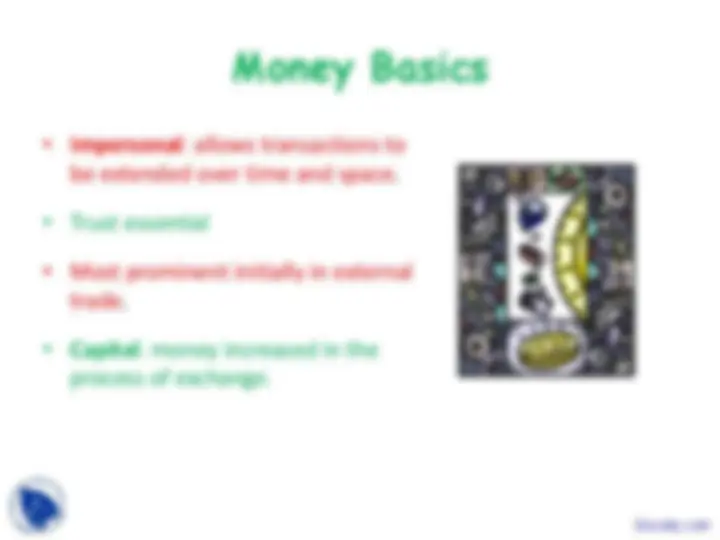
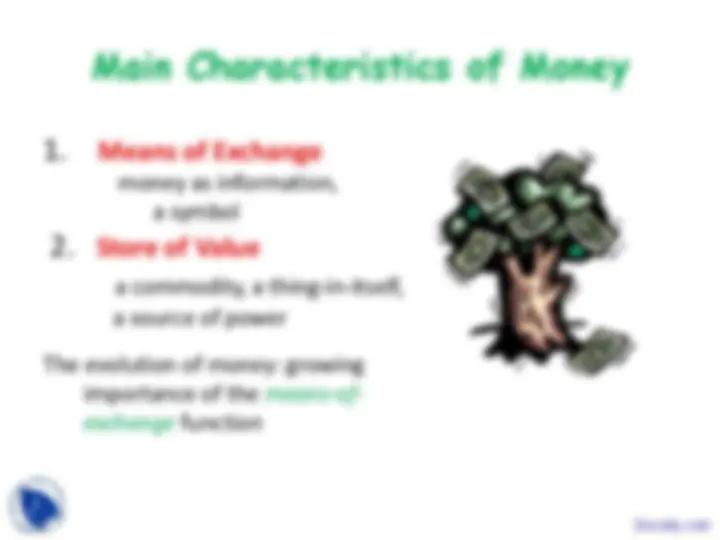
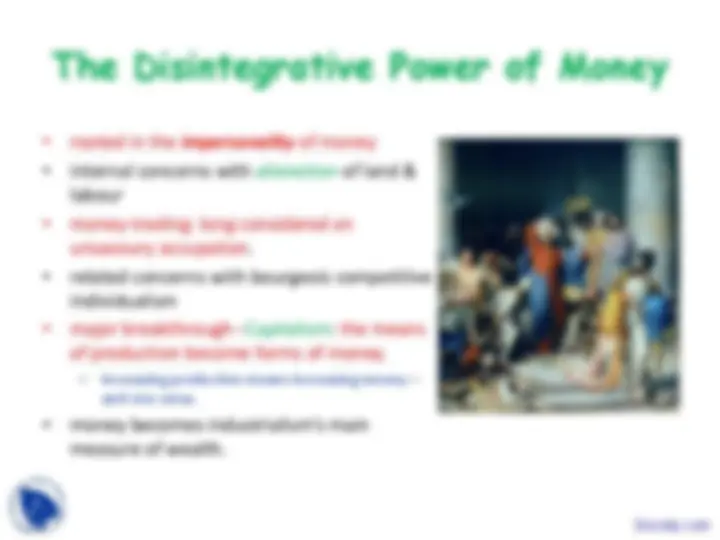
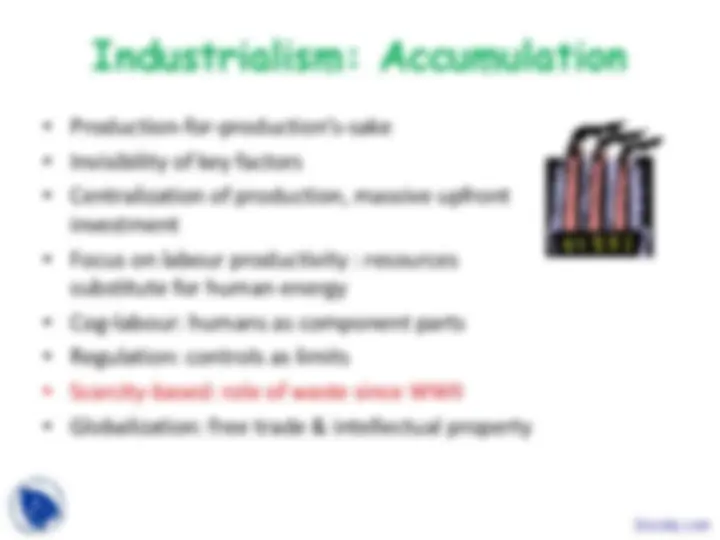
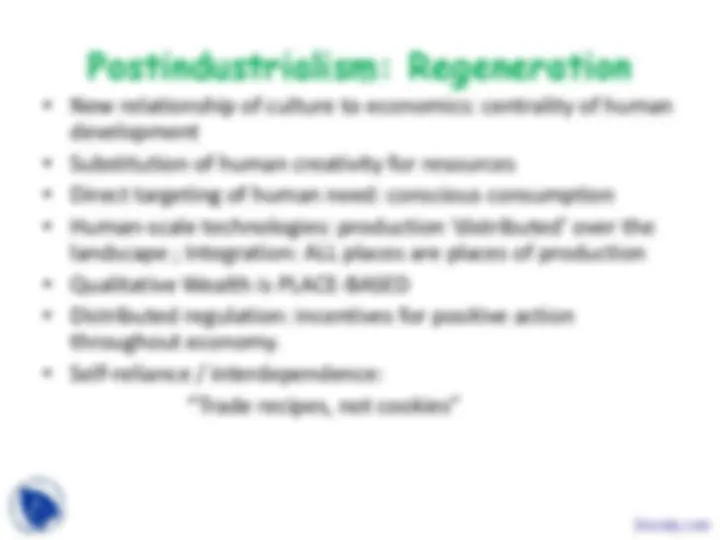
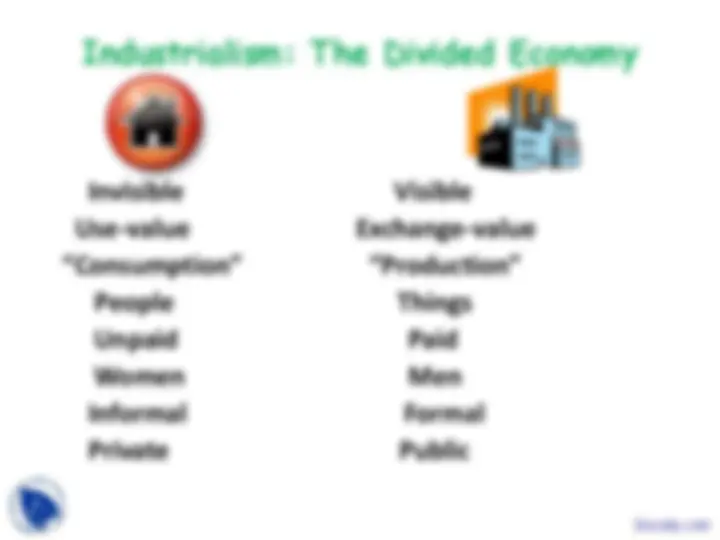
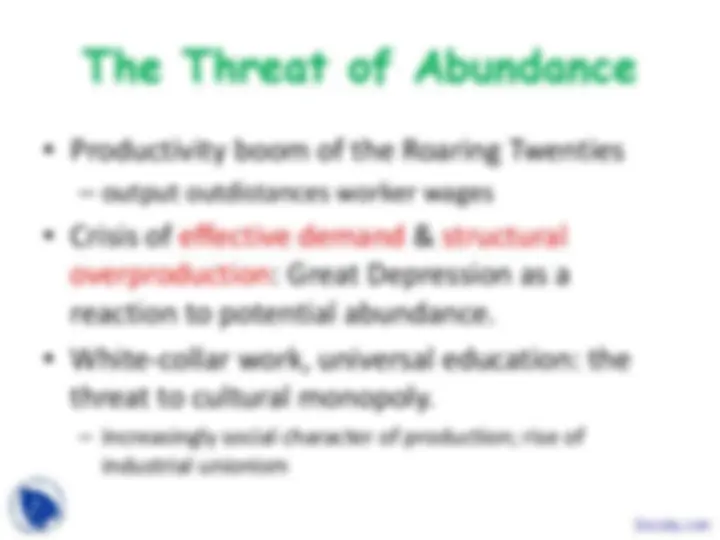
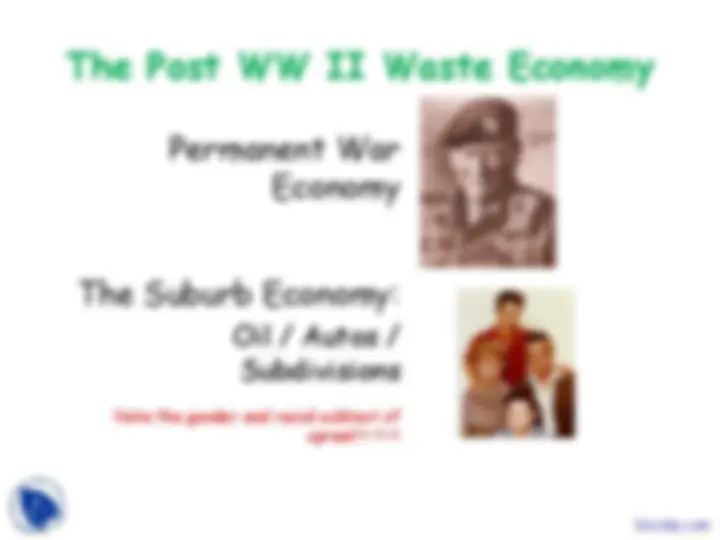
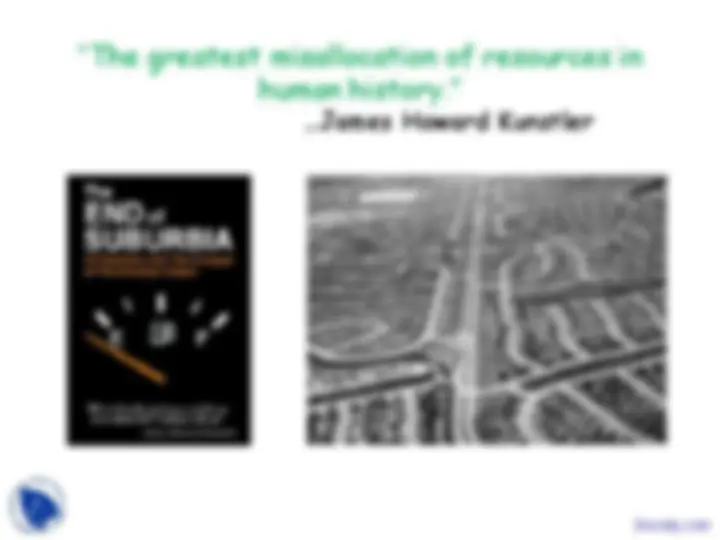
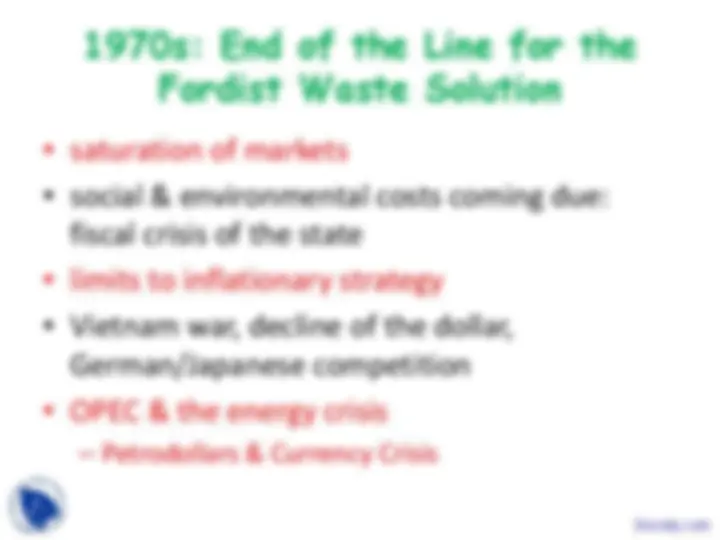
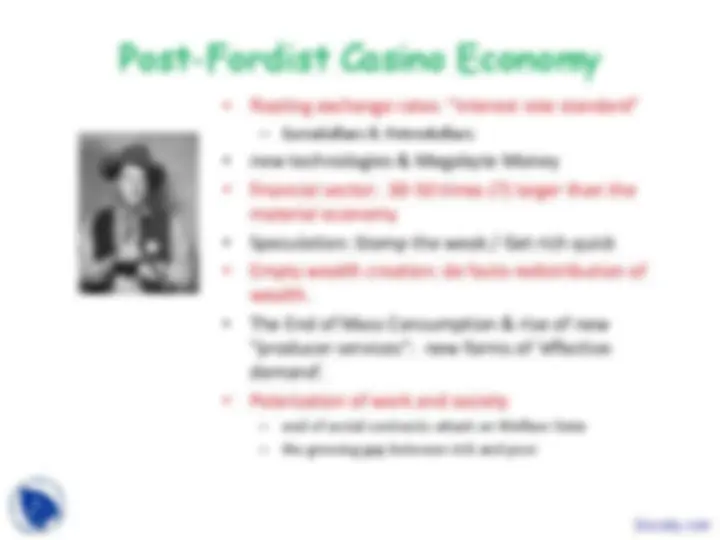
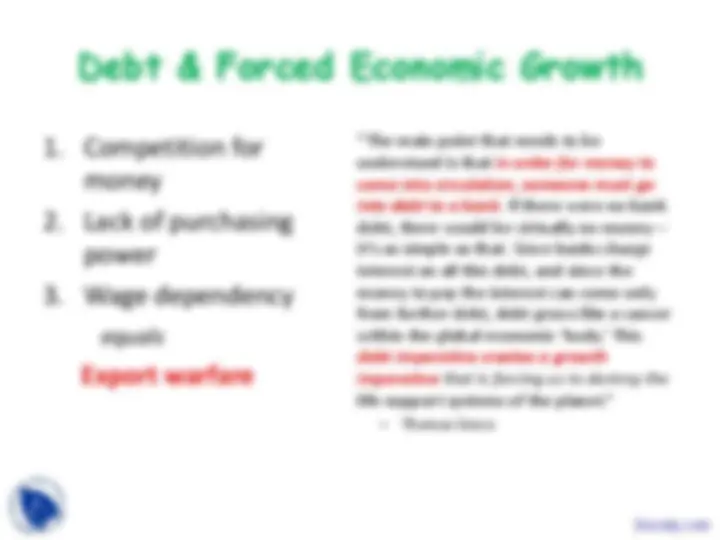
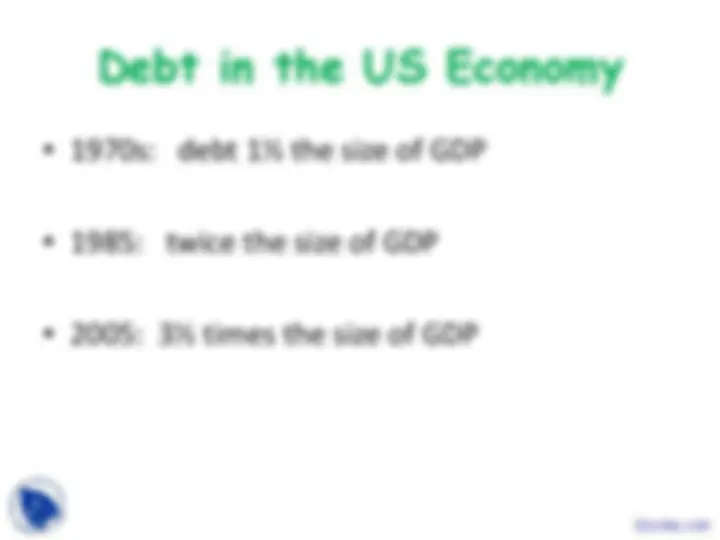
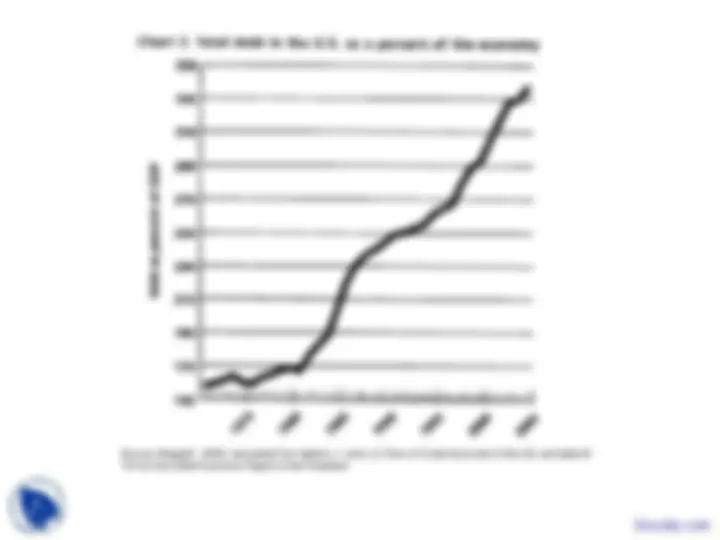
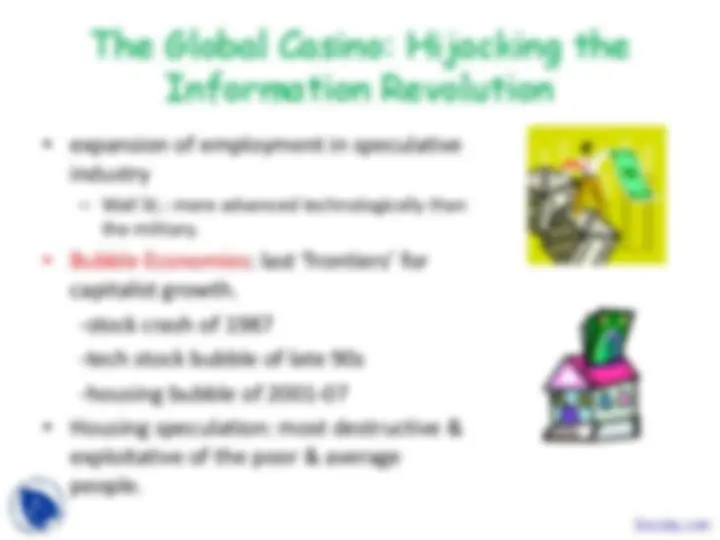
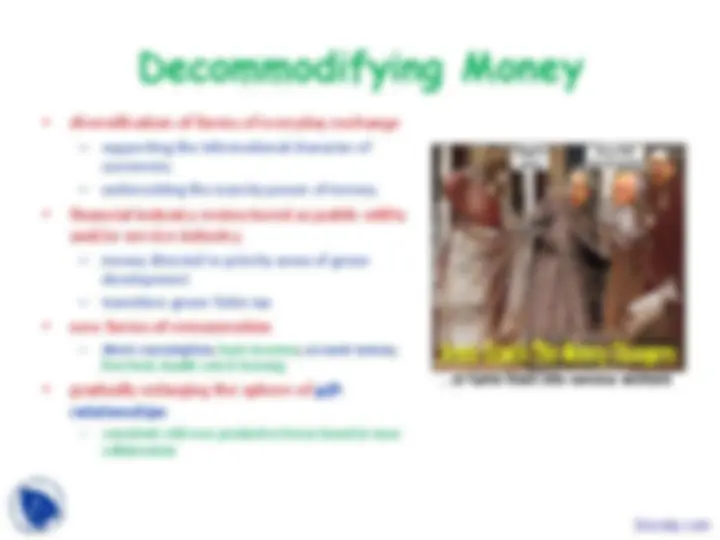
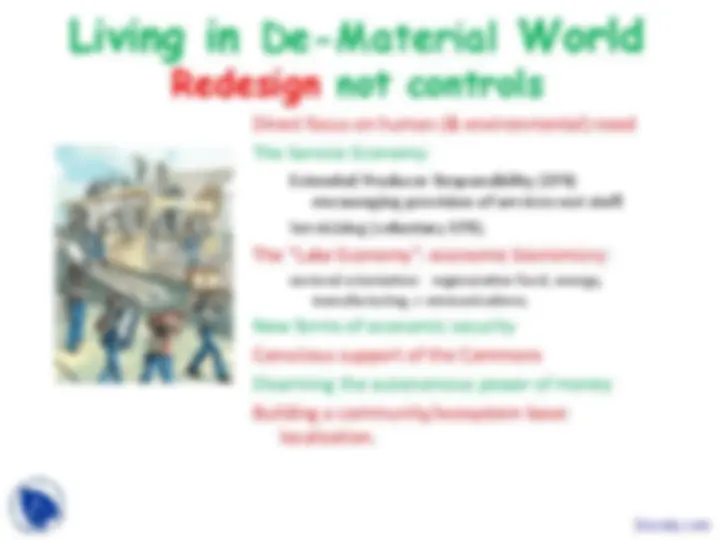
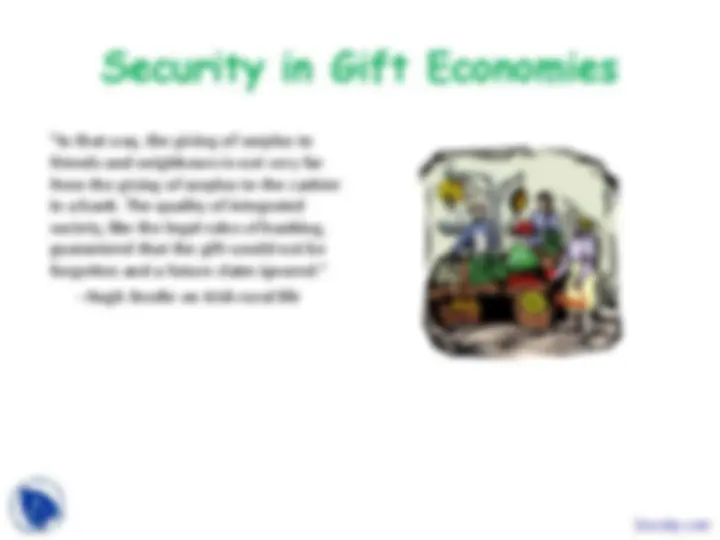
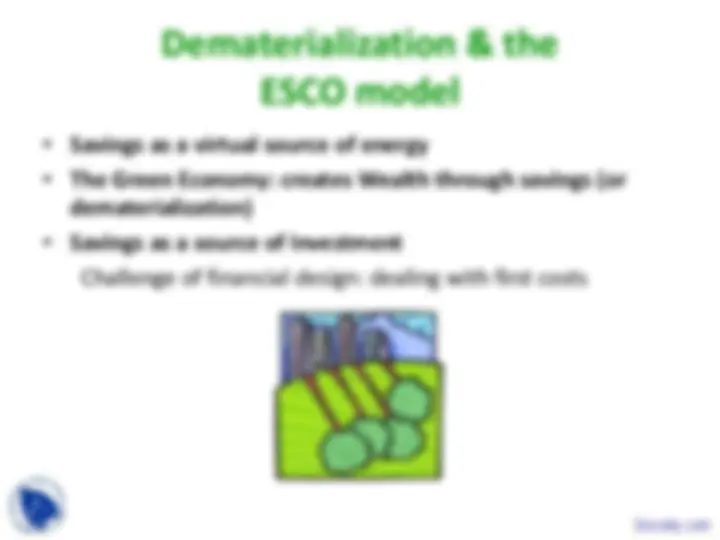
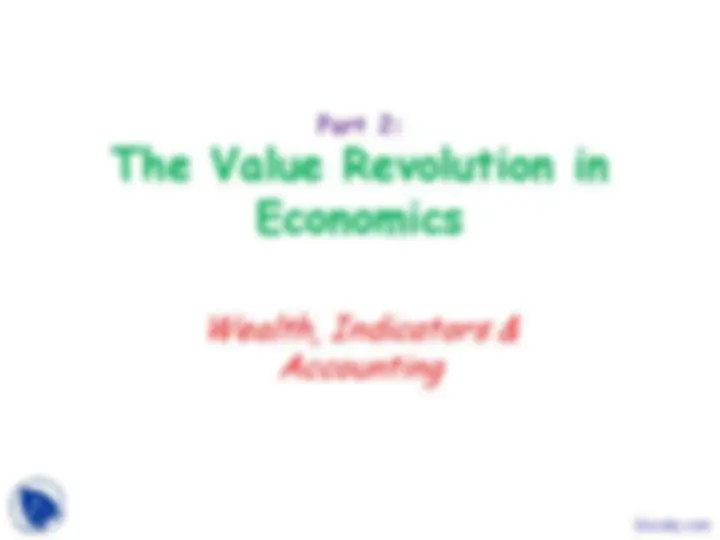
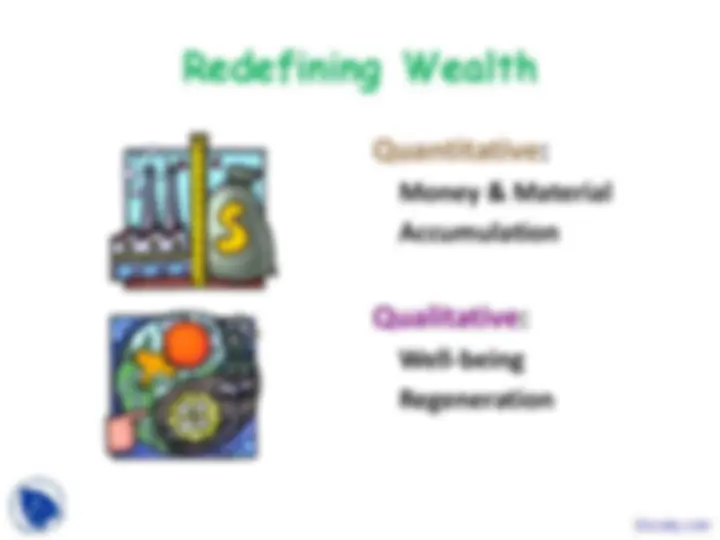
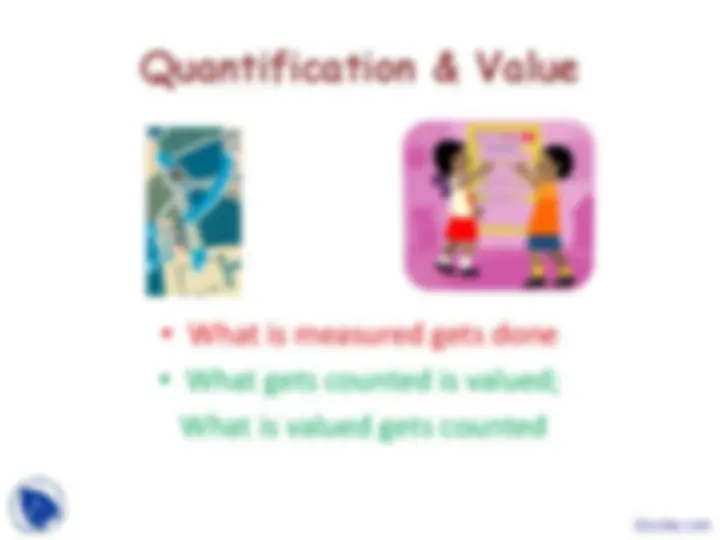
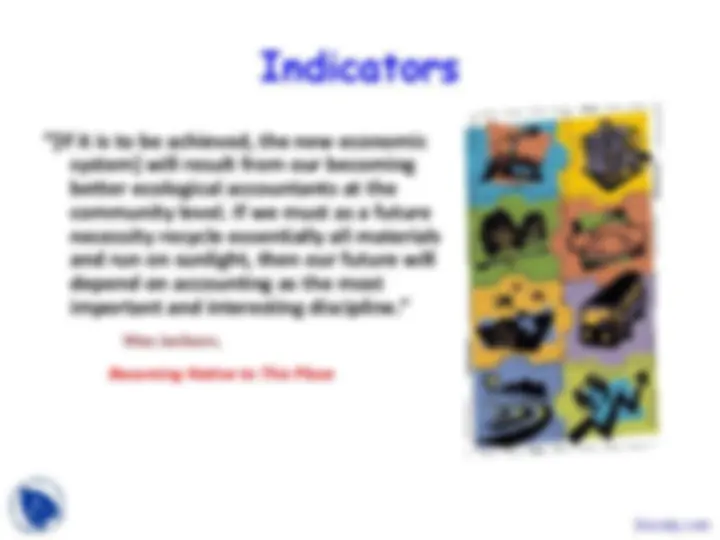
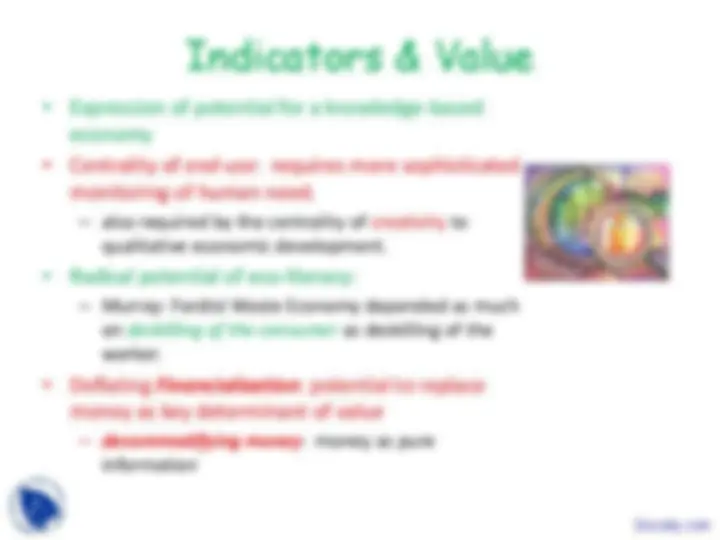
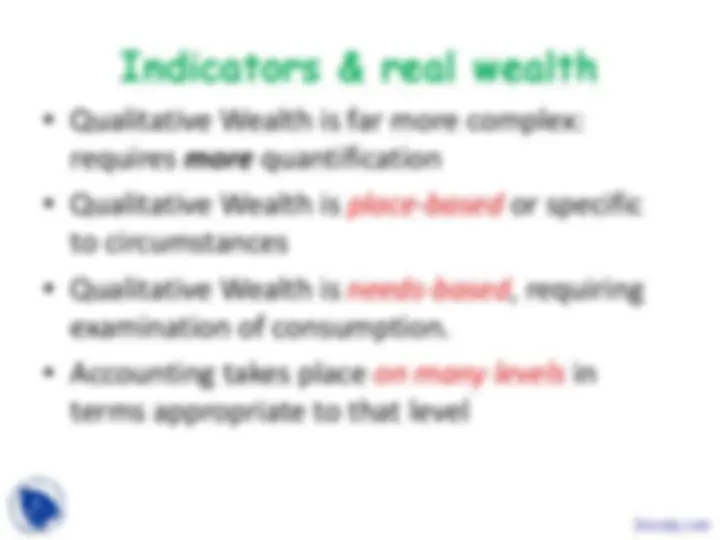
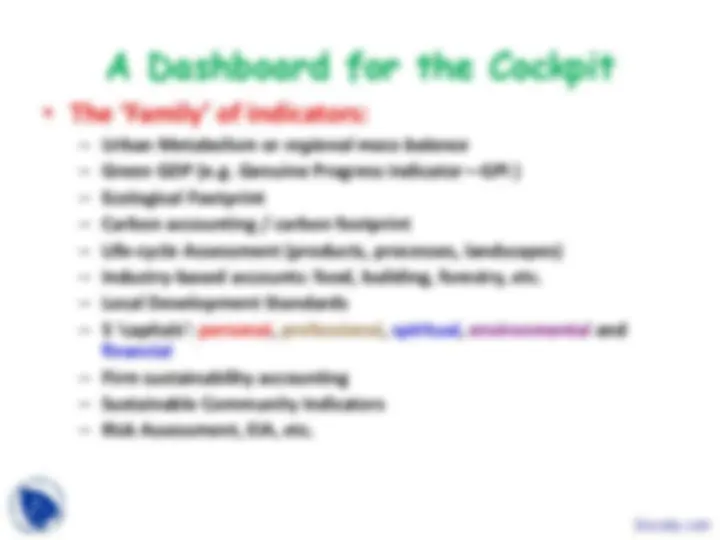
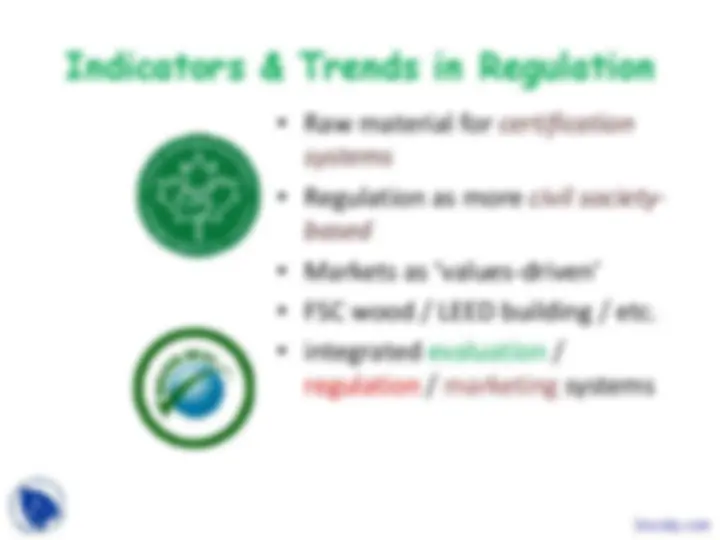
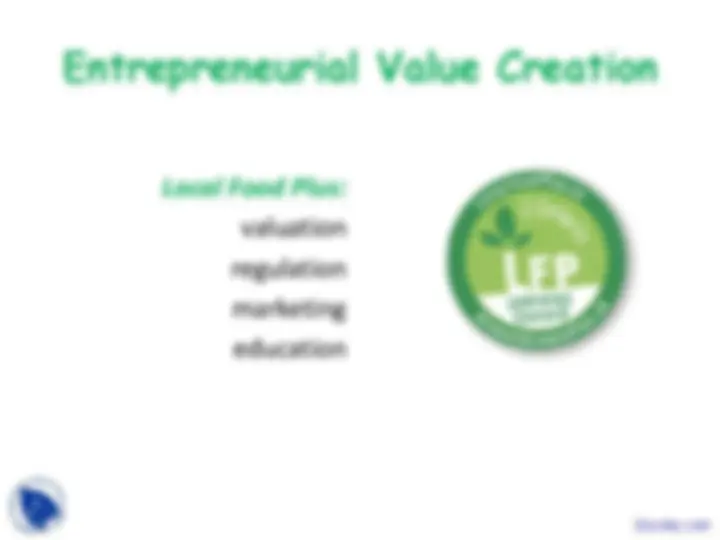
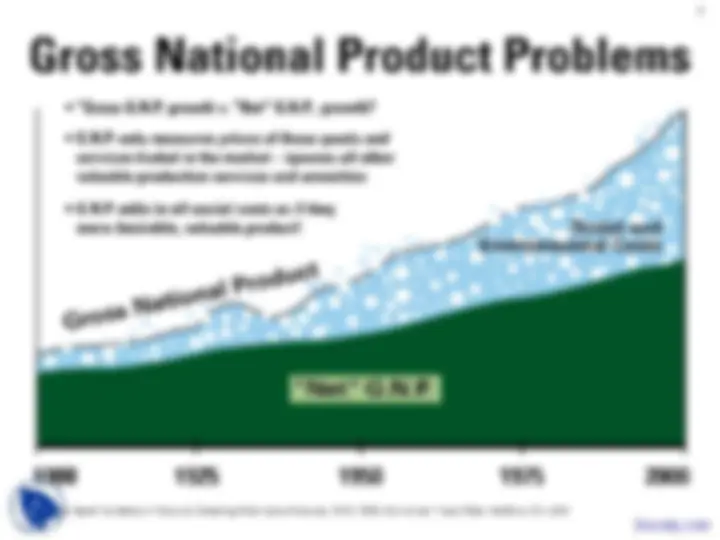
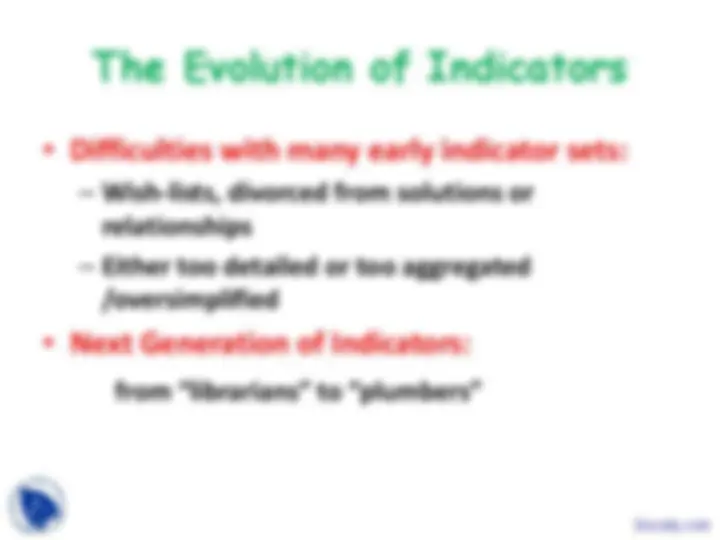
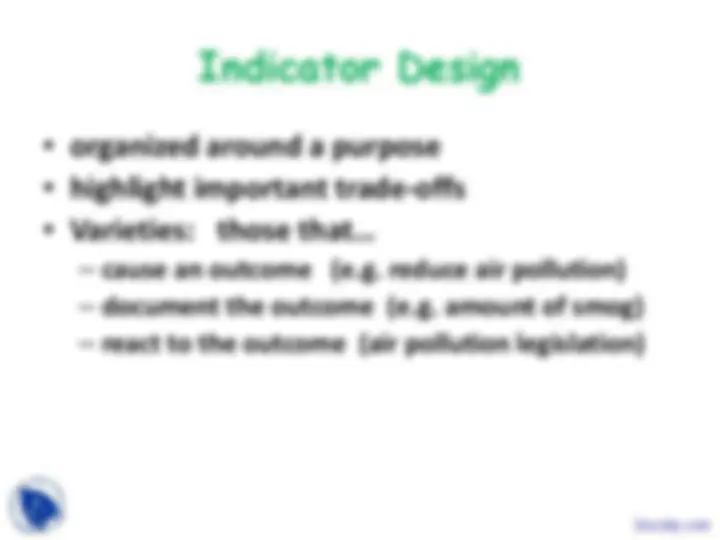
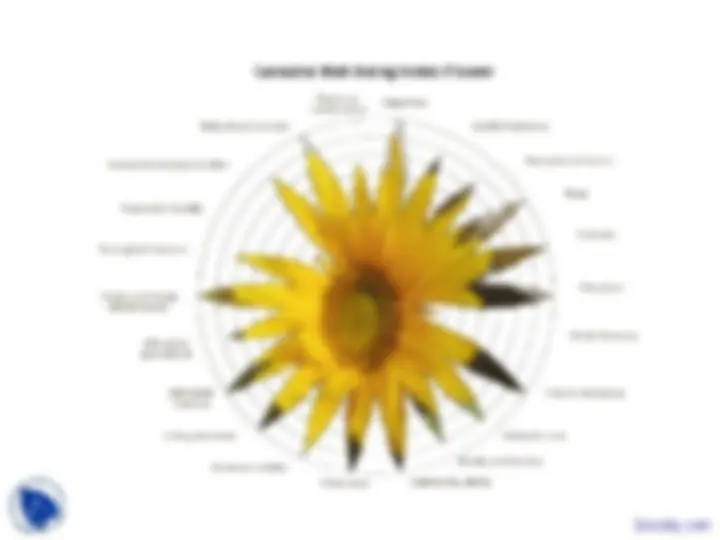
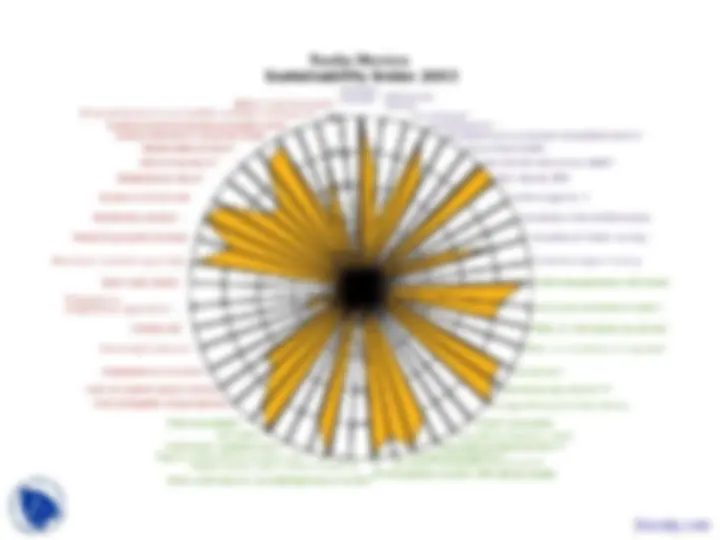
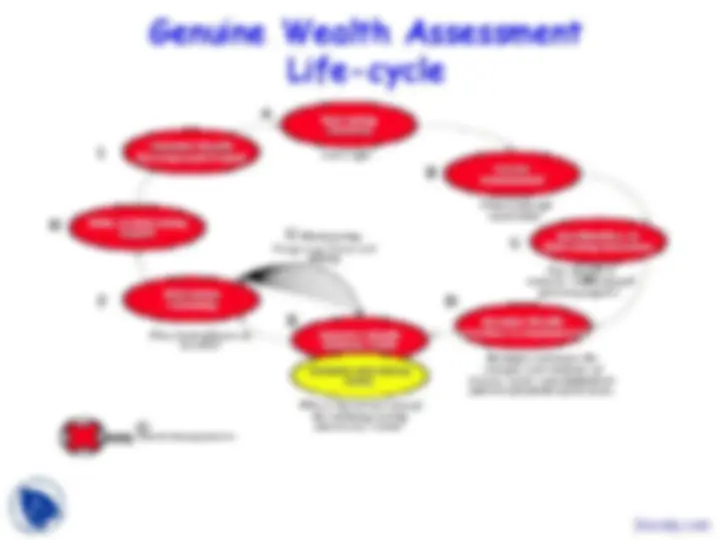
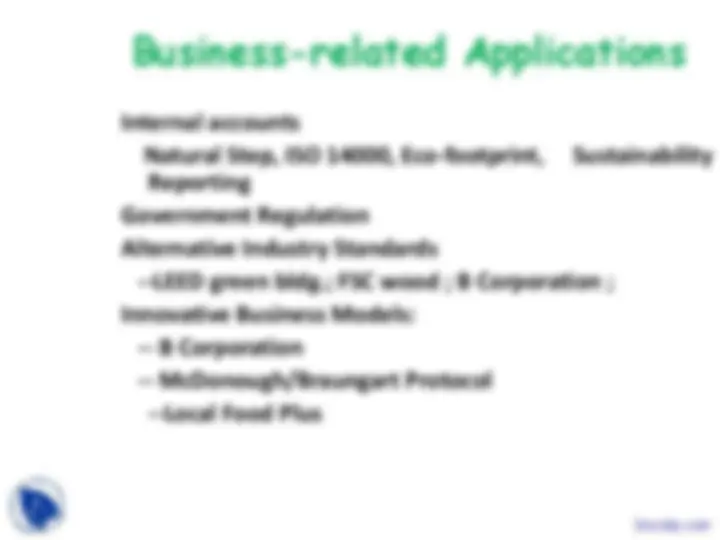
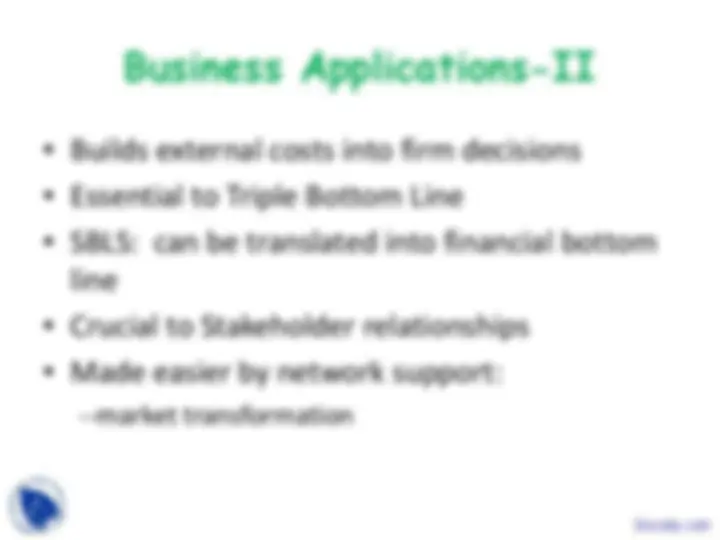
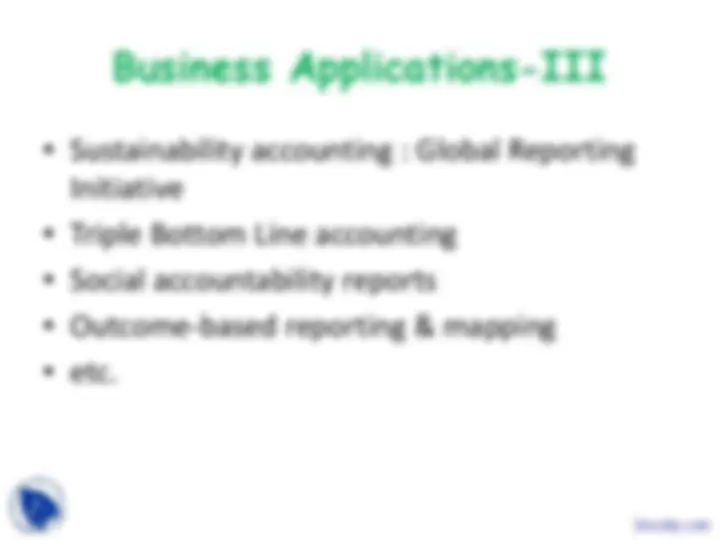
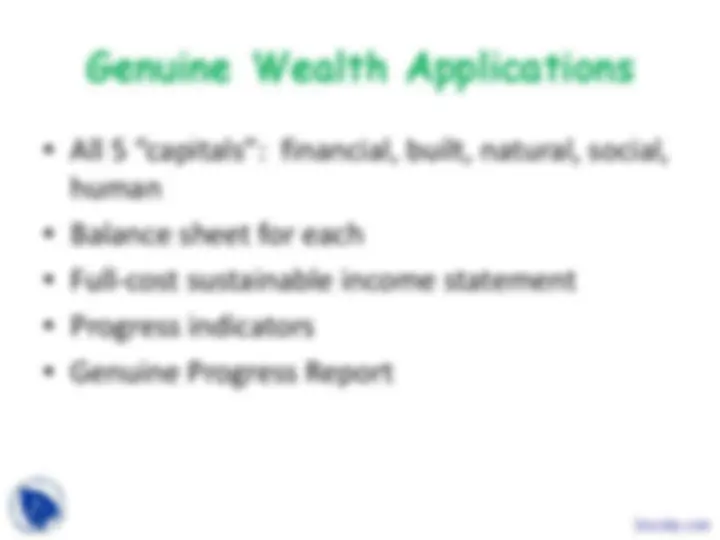
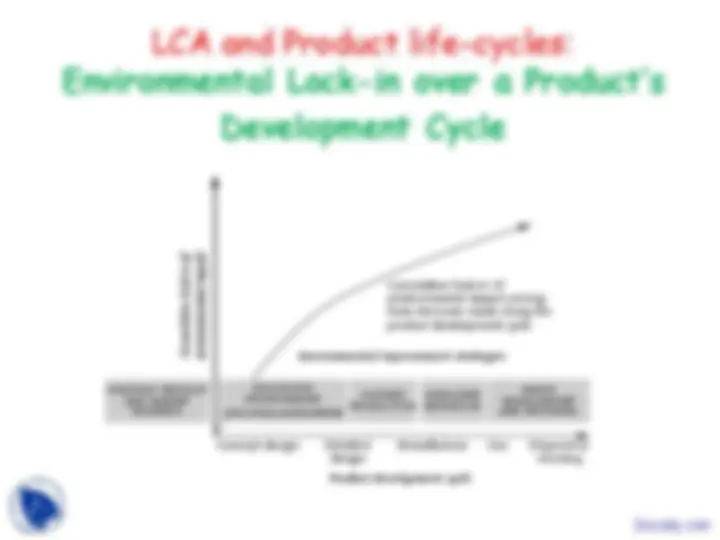
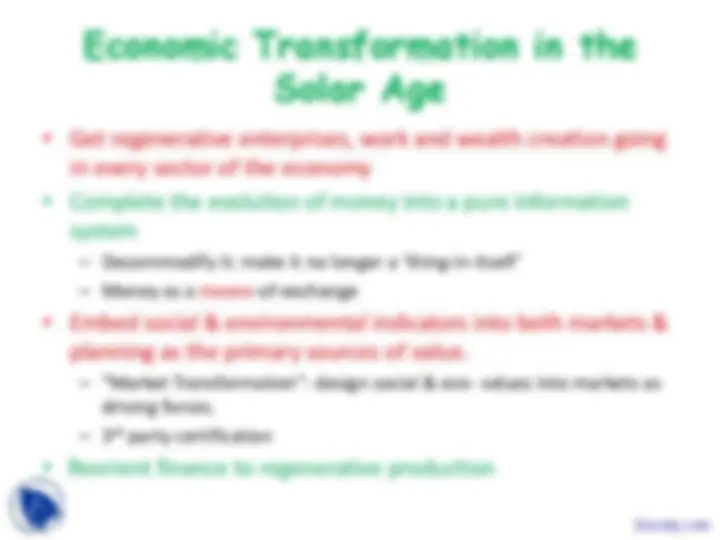
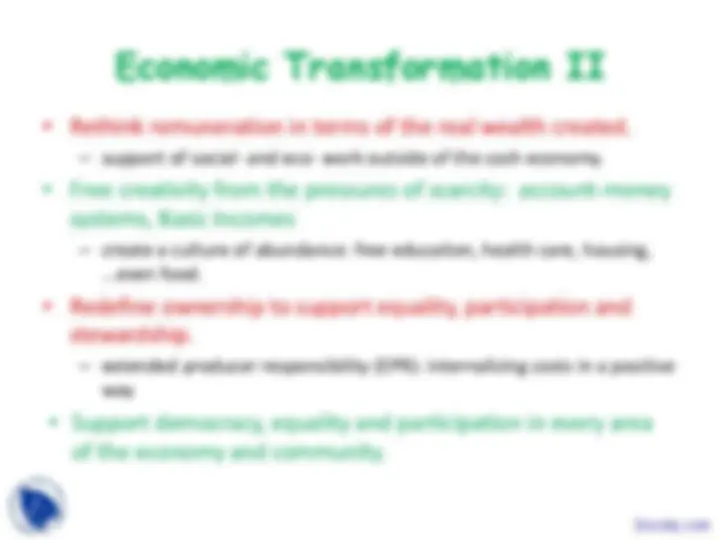
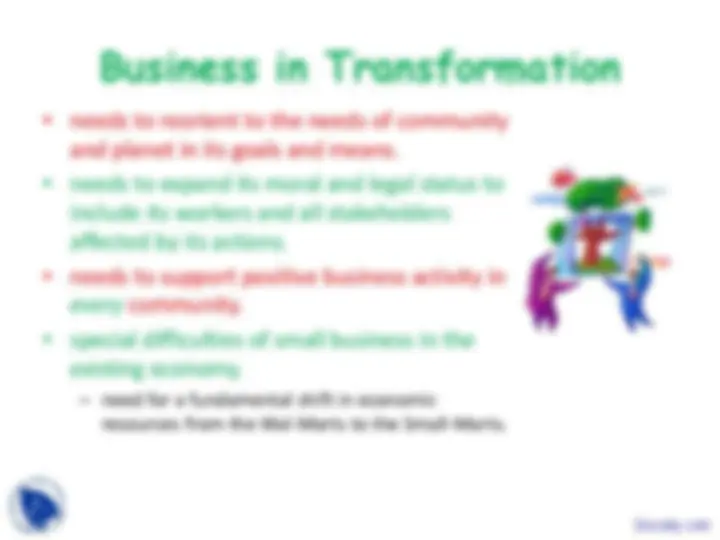
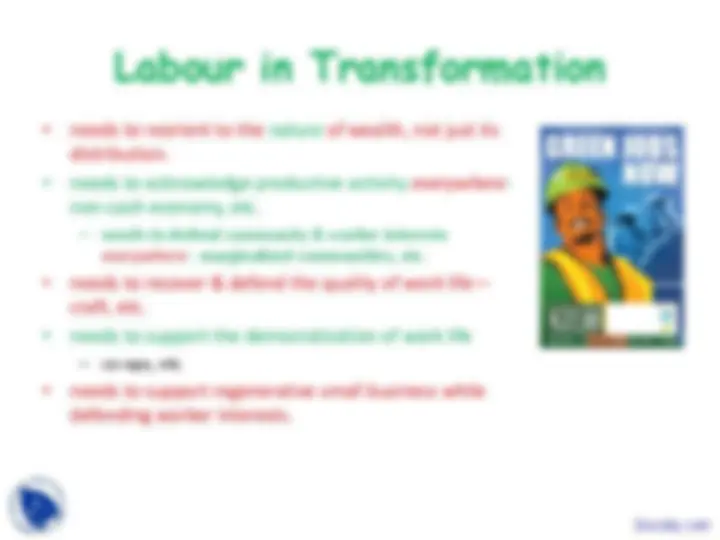


Study with the several resources on Docsity

Earn points by helping other students or get them with a premium plan


Prepare for your exams
Study with the several resources on Docsity

Earn points to download
Earn points by helping other students or get them with a premium plan
Community
Ask the community for help and clear up your study doubts
Discover the best universities in your country according to Docsity users
Free resources
Download our free guides on studying techniques, anxiety management strategies, and thesis advice from Docsity tutors
This lecture is from Environmental Economics. Key important points are: Real Vs Phantom Wealth, Nature of Money, Money and Finance, Scarcity and Waste, Value Revolution, Genuine Wealth, Qualitative Development, Information Economy, Education and Activism, Trends in Money and Finance
Typology: Slides
1 / 51

This page cannot be seen from the preview
Don't miss anything!












































Part I: The Nature of Money Trends in Money & Finance Financialization: Money, Debt, Scarcity and Waste Part II: Culture, Quality and the Value Revolution Indicators of Genuine Wealth The Information Economy & Qualitative Development Community, Education & Activism
Part 1:
Trends in Money & Finance
What is Money?
What is Wealth?
Debt, Waste and Scarcity
Financialization: Hijacking the Information Revolution
Decommodifying Money
money as information, a symbol
a commodity, a thing-in-itself, a source of power
The evolution of money: growing importance of the means-of- exchange function
N.B.: Perpetuation of the System demands the perpetuation of this definition
Industrialism: Accumulation
Note the gender and racial subtext of sprawl
equals
“The main point that needs to be understood is that in order for money to come into circulation, someone must go into debt to a bank. If there were no bank debt, there would be virtually no money— it’s as simple as that. Since banks charge interest on all this debt, and since the money to pay the interest can come only from further debt, debt grows like a cancer within the global economic ‘body.’ This debt imperative creates a growth imperative that is forcing us to destroy the life-support systems of the planet.”